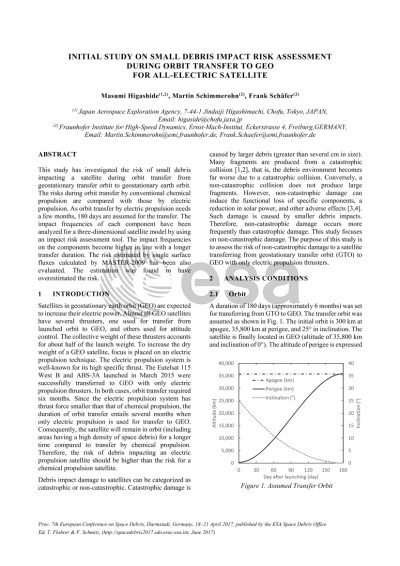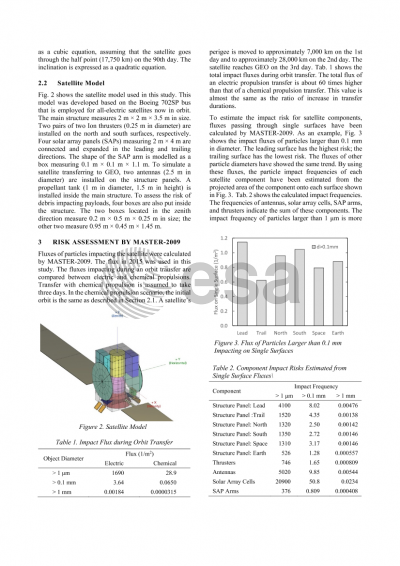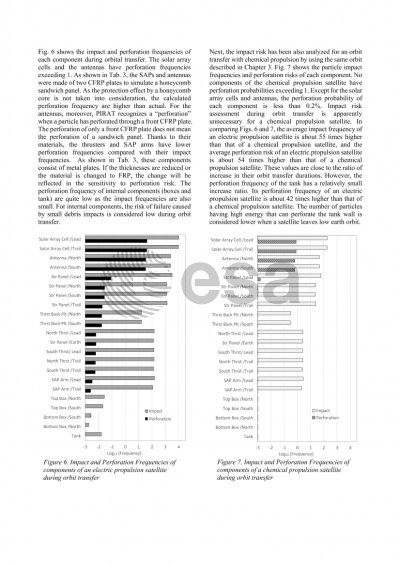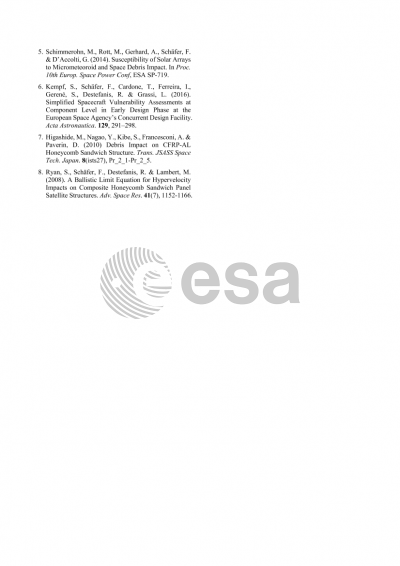Document details

Abstract
Satellites in geostationary earth orbit (GEO) are expected to increase their electric power. Almost all GEO satellites have several thrusters, one used for a transfer from launched orbit to GEO and others used for attitude control. The weight of these thrusters accounts for approximately half of a launch weight. To increase the dry weight of a GEO satellite, electric propulsion technique is focused on. Electric propulsion system is well-known since its high specific thrust. The Eutelsat 115 West B launched in March 2015 succeeded transferring to GEO with only electric propulsion thrusters. In this case, 6 months were spend to the orbit transfer. Since thrust force of an electric propulsion thruster is smaller than a chemical propulsion, orbit transfer duration becomes several months when electric propulsion is used for a transfer to GEO. Consequently, the satellite will stay longer in orbits passing crowded area in space debris than a chemical propulsion satellite. Debris impact risk of an electric propulsion satellite becomes higher than chemical propulsion.
Debris impact damage of satellite can be categorized into catastrophic and non-catastrophic. Catastrophic damage is caused by larger debris (over several cm). Many fragments are produced at a catastrophic collision, i.e. debris environment become worse due to a catastrophic collision. On the other hand, non-catastrophic collision do not produce large fragments. However, non-catastrophic damage can induce functional loss of specific component, solar power reduction, and so on. It is caused by smaller debris impacts. Therefore, the non-catastrophic damage occurs more frequently than the catastrophic damage. This study focused on the non-catastrophic damage.
The purpose of this study is to assess non-catastrophic damage risk of satellite transferred from geostationary transfer orbit to GEO with only electronic propulsion thrusters. The risk analysis was performed with the particle impact risk and vulnerability assessment tool (PIRAT) developed by EMI. MASTER-2009 was used as an environment model. This presentation reports the risk analysis result a scenario based on the Eutelsat 115 Wet B.
Preview







